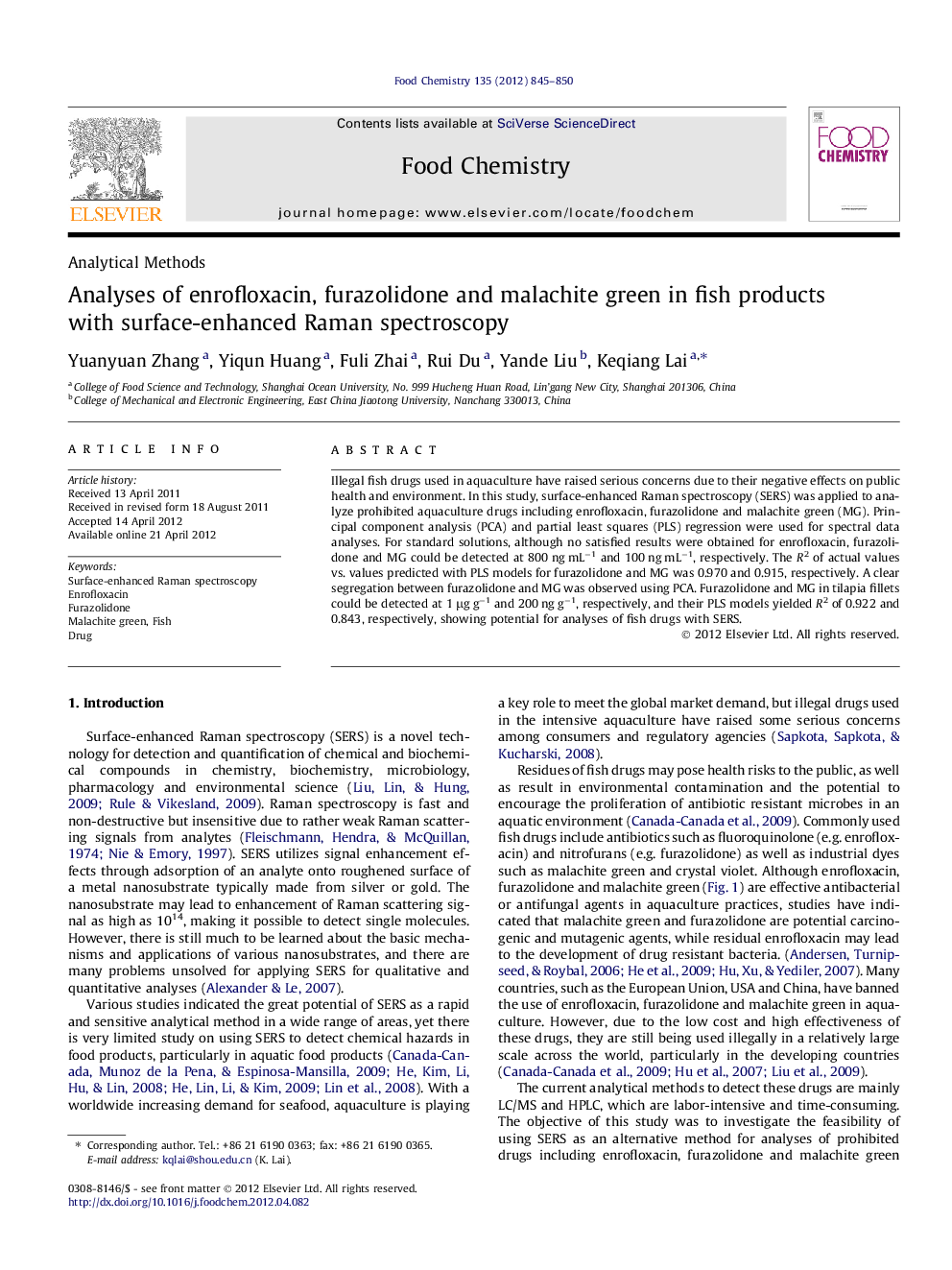| Article ID | Journal | Published Year | Pages | File Type |
|---|---|---|---|---|
| 1185821 | Food Chemistry | 2012 | 6 Pages |
Illegal fish drugs used in aquaculture have raised serious concerns due to their negative effects on public health and environment. In this study, surface-enhanced Raman spectroscopy (SERS) was applied to analyze prohibited aquaculture drugs including enrofloxacin, furazolidone and malachite green (MG). Principal component analysis (PCA) and partial least squares (PLS) regression were used for spectral data analyses. For standard solutions, although no satisfied results were obtained for enrofloxacin, furazolidone and MG could be detected at 800 ng mL−1 and 100 ng mL−1, respectively. The R2 of actual values vs. values predicted with PLS models for furazolidone and MG was 0.970 and 0.915, respectively. A clear segregation between furazolidone and MG was observed using PCA. Furazolidone and MG in tilapia fillets could be detected at 1 μg g−1 and 200 ng g−1, respectively, and their PLS models yielded R2 of 0.922 and 0.843, respectively, showing potential for analyses of fish drugs with SERS.
► SERS, a novel technology, was applied as an alternative method to analyze prohibited drug residues. ► Standard solutions of fish drugs and contaminated fish fillets were tested. ► Chemometric methods were applied to overcome inconsistency of SERS spectral features. ► SERS showed great promise for detection and determination of trace amounts of residual fish drugs.
